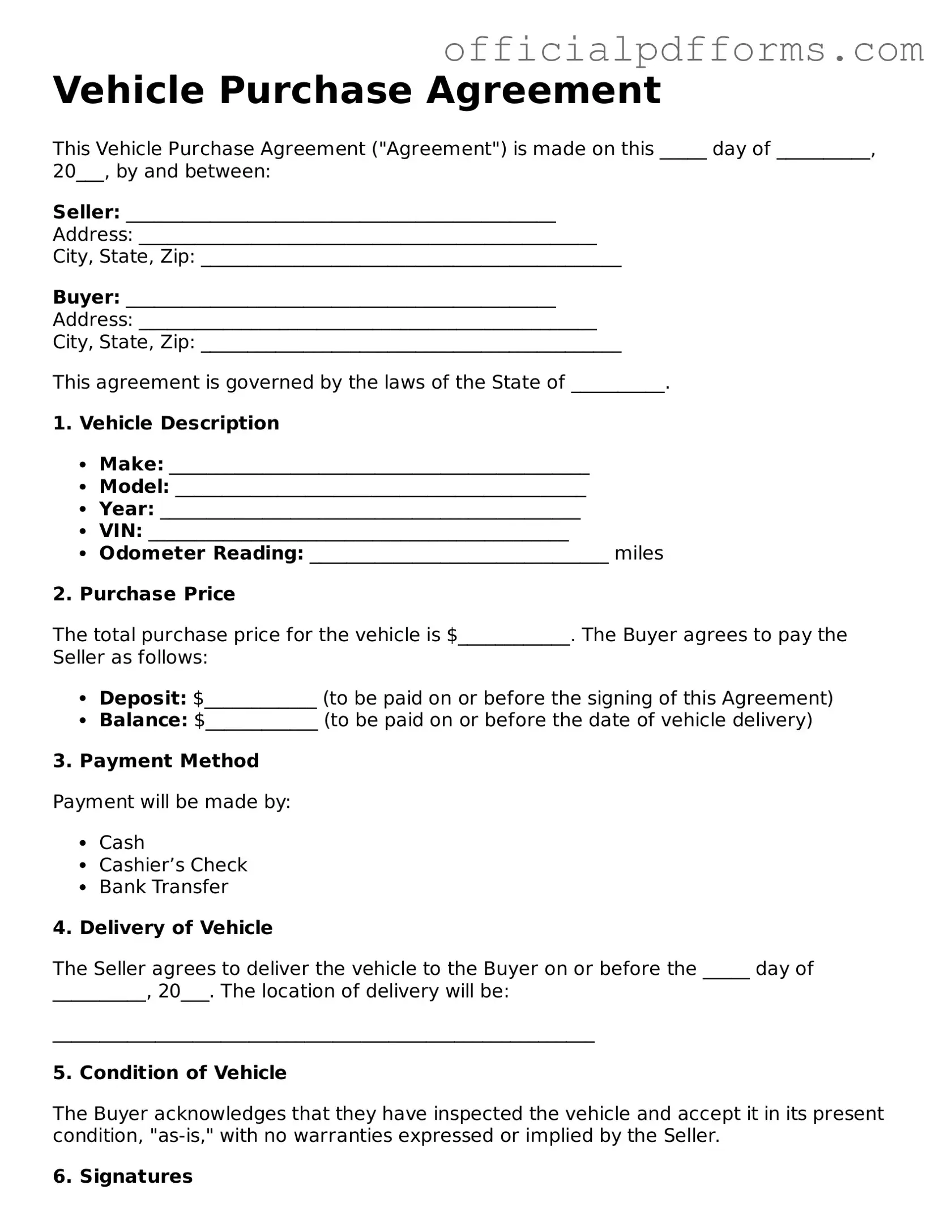Valid Vehicle Purchase Agreement Document
A Vehicle Purchase Agreement is a legal document that outlines the terms and conditions under which a vehicle is sold. This form serves to protect both the buyer and the seller by clearly defining the details of the transaction, including price, payment methods, and vehicle condition. Understanding this agreement is essential for a smooth and transparent vehicle purchase process.
Ready to take the next step? Fill out the form by clicking the button below!
Access Form Online
